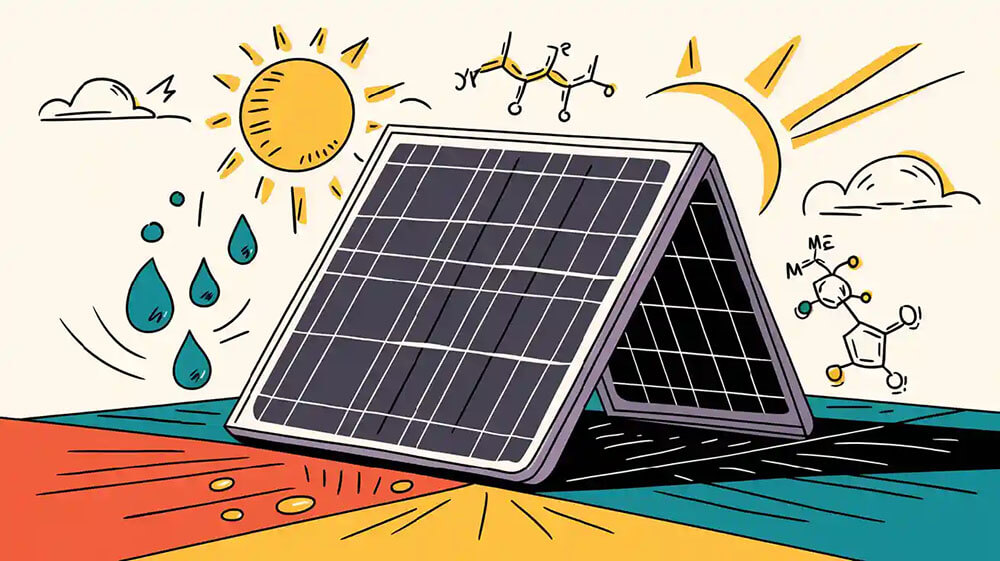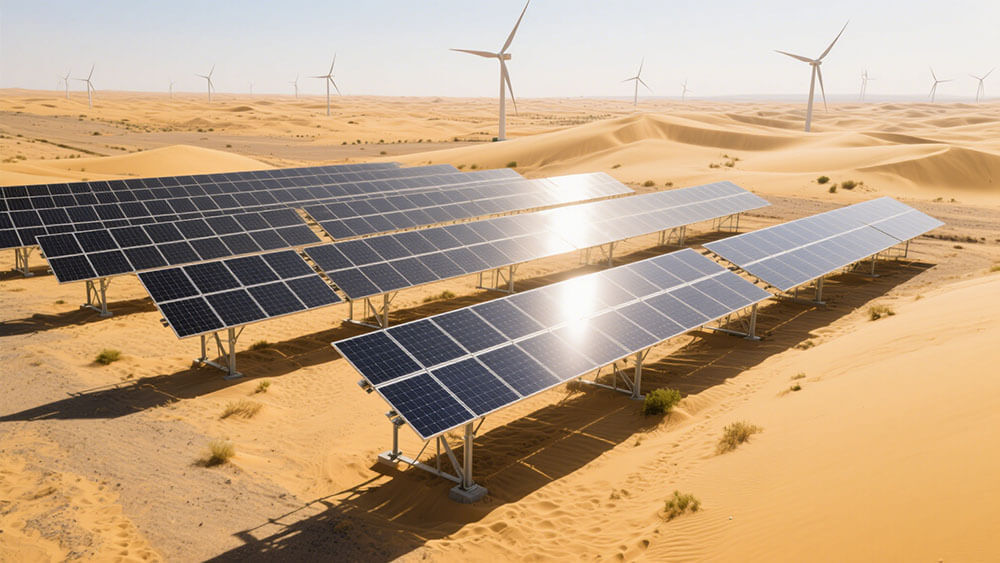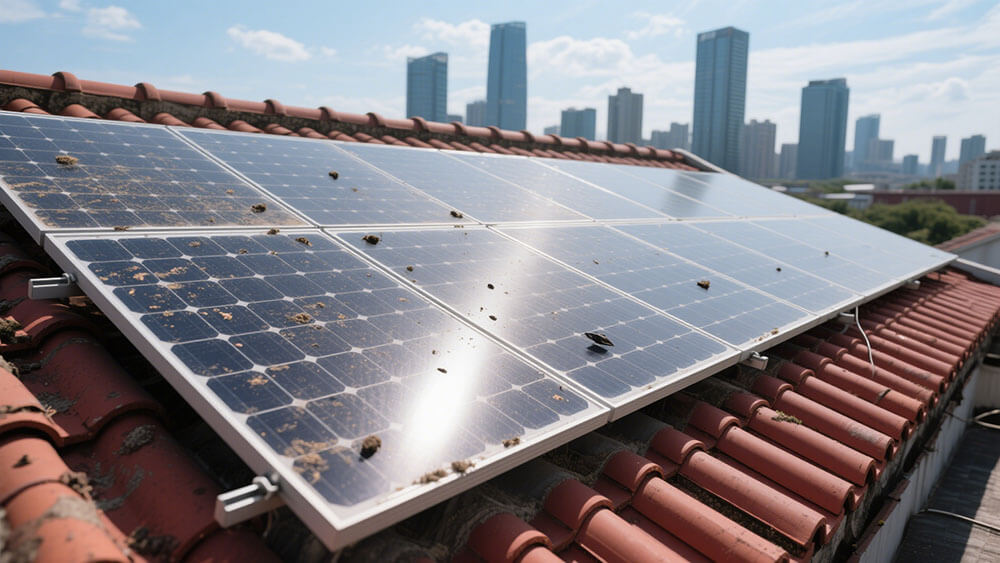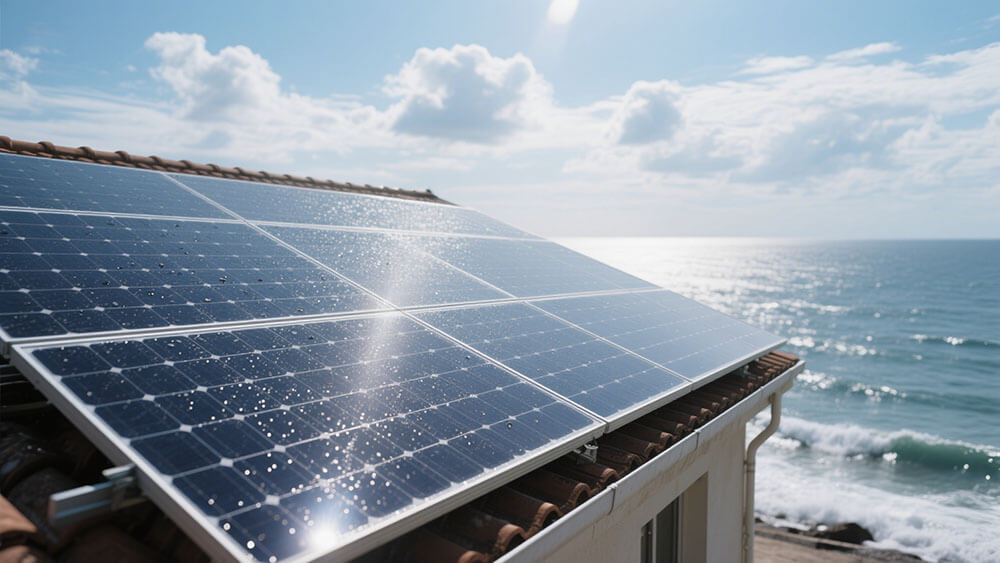
Organic solar cells are a green energy option, but many wonder how long do organic solar cells last. They tend to wear out faster than regular panels due to weather conditions and the use of weaker materials. Understanding how long they last and what factors affect their lifespan can help you make an informed decision for your energy needs.
Key Takeaways
Organic solar cells work for about 6.2 years indoors. Outdoors, they last around 10,000 hours. They break down faster than silicon panels because of the environment.
To make organic solar cells last longer, use strong coatings. High-quality materials also help. Regular care and proper setup are very important.
Things like sunlight, humidity, and heat affect how long they last. Protecting them from bad weather can make them work better.
Part 1: How Long Do Organic Solar Cells Last?

1.1 Average Lifespan of Organic Solar Cells
Organic solar cells (OPVs) don’t last as long as silicon panels. Research shows OPVs can work for over 6.2 years indoors. Outdoors, they last about 10,000 hours, or 420 days. This big difference shows how weather affects their durability.
OPVs’ lifespan depends on things like sunlight, air, and water. New materials have made them last longer, but they’re still less stable than silicon. Because of this, OPVs aren’t great for long-term use unless protected.
1.2 Comparison: How Long Do Solar Panels Last?
When comparing OPVs to silicon panels, the difference is clear. Silicon panels, used in homes and businesses, last about 30 years. They are stronger because their materials resist damage better.
Here’s a simple comparison:
Organic Solar Cells (OPVs):
Indoors: Over 6.2 years.
Outdoors: About 10,000 hours (~420 days).
Controlled tests: Damage starts after 650 hours.
Traditional Silicon Solar Panels:
Lifespan: 25–30 years.
Very little damage over time.
This shows why the environment matters when picking solar panels.
1.3 Why Organic Solar Cells Have a Shorter Lifespan
OPVs don’t last as long because they’re sensitive to weather. Unlike silicon panels, OPVs break down faster in sunlight, air, and water. These cause damage to the layer that makes energy.
Reason | Description |
|---|---|
Sensitivity to Environmental Factors | OPVs are easily damaged by sunlight, air, and water, which weakens them. |
Stability and Durability Issues | Organic materials break down faster than silicon when exposed to weather. |
How OPVs are made also affects how long they last. Bad manufacturing can cause flaws, making them wear out faster. Poor installation can also damage them.
To make OPVs last longer, use protective coatings to block damage. Regular care and careful installation can also help them work better for longer.
Part 2: Factors That Influence Solar Panel Lifespan

2.1 Material Quality and Stability
The materials used in organic solar cells affect how long they last. Organic materials are light and bendable but break down faster than silicon. Adding high-quality polymers can make them stronger, but problems like moisture and oxidation still happen.
New polymer designs have made organic solar cells tougher. Scientists have created materials that handle weather better, making them last longer. Still, the type of materials used during production is very important for their lifespan.
Tip: Choose organic solar cells with advanced polymers and protective layers. These features help them last longer.
2.2 Environmental Conditions (UV exposure, temperature, humidity)
Weather has a big impact on organic solar cells. Sunlight, heat, and moisture make them wear out faster and work less efficiently.
Environmental Factor | Effect on Solar Cells |
|---|---|
UV Exposure | Sunlight and moisture cause damage, lowering efficiency. |
Humidity | Moisture weakens the cells and speeds up damage. |
Temperature | Heat worsens damage when combined with sunlight and moisture. |
Organic solar cells are sensitive to these conditions because of their makeup. For example, sunlight can harm the energy layer, and moisture can get through protective coatings, causing more damage.
To reduce these problems, manufacturers use protective layers to shield the cells. Installing them in safe places also helps limit exposure to harmful weather.
2.3 Manufacturing Processes and Design
How organic solar cells are made affects how long they last. Bad production methods can cause flaws, while better techniques make them stronger.
Study | Findings | Key Focus |
|---|---|---|
Jørgensen et al. (2014) | Oxygen, moisture, and sunlight harm the cells’ energy output. | Weather effects on lifespan. |
Meitzner et al. (2019) | Tested different batches under stress conditions. | Stability under tough conditions. |
Urban et al. (2019) | Studied heat damage to solar cell parts. | Effects of heat on parts. |
Weerasinghe et al. (2016) | Found better results with protected devices. | Importance of protective layers. |
Uddin et al. (2019) | Listed protective materials and their effects. | Role of protection in lifespan. |
New production methods have improved how reliable organic solar cells are. For example:
Better polymers make them stronger and more efficient.
Protective layers keep them safe from weather damage.
Improved production reduces flaws and ensures good quality.
These advances make organic solar cells last longer, but production must focus on durability to improve their lifespan.
2.4 Maintenance and Handling Practices
Taking care of organic solar cells helps them last longer. Rough handling can damage them, and skipping maintenance can make them wear out faster.
Clean the panels often to remove dirt and moisture. Use soft materials and avoid strong chemicals that might harm them. Store and move them carefully to prevent damage.
Note: Check the panels regularly for signs of damage, like fading or lower power. Fixing problems early can stop further harm and keep them working well.
By cleaning and handling them properly, you can make organic solar cells last much longer.
Part 3: Signs of Degradation in Organic Solar Cells

3.1 Lower Power and Efficiency
A clear sign of aging in organic photovoltaic devices is less power and efficiency. Over time, they convert less sunlight into electricity. This drop is measured using terms like Power Conversion Efficiency (PCE), Open-Circuit Voltage (V_OC), Short-Circuit Current (J_SC), and Fill Factor (FF).
Parameter | Starting Value | After 2000 Hours | After 3000 Hours |
|---|---|---|---|
100% | Below 40% | 92% | |
Open-Circuit Voltage (V_OC) | Starts High | Drops Quickly | Levels Off |
Short-Circuit Current (J_SC) | Starts High | Small Drop | Small Drop |
Fill Factor (FF) | Starts High | Drops Fast | Slight Drop |
Aging affects these differently. Devices with protective layers stay stable longer. They keep over 80% of their PCE after 2000 hours. Without protection, PCE can fall below 40% in the same time.
Tip: Use tools to check your device’s performance often. Early checks can help fix problems before they get worse.
3.2 Physical Changes You Can See
As devices age, you might see cracks or color changes. These happen because of sunlight, heat, and moisture. Over time, these stresses damage the surface of the device.
Diagnostic Tool | What It Does |
|---|---|
Electrical Tests | Checks how well the device works. |
Imaging Tools | Uses special cameras to find hidden cracks or defects. |
AI Systems | Finds patterns of damage using performance data. |
These tools help find damage early. For example, imaging tools can spot tiny cracks that are hard to see but hurt performance.
3.3 More Sensitive to Weather
Older organic solar cells are weaker against weather. Heat, sunlight, air, and water speed up damage. UV rays and moisture are especially harmful, ruining the energy-making parts.
“Organic photovoltaics (OPVs) are less strong than inorganic ones. UV light, air, and water cause them to break down.”
Older devices need more care to keep working. Adding UV filters or coatings can help protect them. Still, regular maintenance is very important.
Note: To make your device last longer, install it in safe places or use better protective materials.
The lifespan of organic solar cells depends on their materials, environment, and how they’re made. For instance, sunlight (DNI) and warm air (DBT) help them last longer. However, too much moisture (RH) can make them wear out faster.
Environmental Factor | Impact on Lifespan |
|---|---|
Sunlight (DNI) | Makes them last longer |
Warm Air (DBT) | Improves durability |
High Moisture (RH) | Shortens their lifespan |
To keep organic solar cells working well, try these tips:
Use special coatings to keep over 80% power for 2 years.
Follow ISOS L-2 rules to protect against heat and light damage.
Clean them often and use anti-dust sprays to avoid energy loss.
These steps not only improve how well they work but also protect them from weather damage. Companies can create custom plans to get the most from their solar systems. For more help, check out Large Power’s custom battery solutions.
FAQ
1. What makes organic solar cells unique compared to regular ones?
Organic solar cells are made with carbon-based materials. This makes them light and bendable. But they wear out faster than silicon panels because of weather.
2. How can you make organic solar cells last longer?
Use protective layers to shield them from damage. Clean and check them often. Placing them in safe spots also helps avoid harmful weather.
3. Are organic solar cells good for big industries?
Organic solar cells don’t last long enough for most factories. But new materials might make them better for certain uses. Check out industrial solutions.
For tailored options, visit Large Power’s services.






